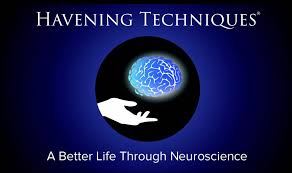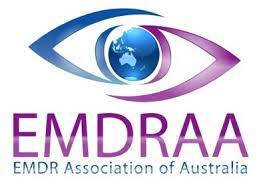
Havening Techniques ® are a relatively new and ever evolving form of therapy. Havening helps permanently treat and heal traumas, anxiety and phobias. Havening has it roots firmly founded in science; it also has the ability to help create positive changes in our brain. Havening Techniques ® are a type of psychosensory therapy (this simply means applying a sensory touch) to produce an electrochemical response in the brain, that literally heals and positively alters our mind.
Experiences from our past can remain with us in our lives, stuck in our minds, resulting in unwanted responses that turn into undesired emotions to similar situations that happen in the “here and now”. These past experiences may be traumatic events of significance that producing PTSD symptoms, or possibly seemingly insignificant experiences that our brain has stored in a way that produces an emotional response that is disproportional.
As amazing as our brain is, it tends to be very literal and doesn’t have our ability to rationally gauge what should be traumatic or not. This is due to the manner in which the experience was perceived at the time, it sometimes stores past experiences in a way that means they set off our primitive emotions such as anger, anxiety, or fear whenever something reminds us of them again.
Havening Techniques ® use a way that has been found to correct the way these memories are stored in our neurological system, so that they have no further emotional impact on our day to day lives.
What happens in a Havening Therapy ® session?
There are different techniques within Havening, some of which work on a specific event, others are more generalised. Some involve recalling memories, others work with the physical feeling only, and some use distraction techniques while the touch therapy is doing its job. So you are safe knowing that there is no requirement to drag up unpleasant feelings or memories, the therapy allows many ways around this.
The Havening Touch ® technique itself involves very specific and gentle touch on the hands, arms of face called Havening Touch ® which has the flexibility to be carried out by the person with whom you are most comfortable. Be it by the practitioner, a partner, a parent or friend, or by doing the process yourself with guidance through the process by your practitioner.
The Havening Therapy ® process consists of:
- The activation of an emotional event by briefly recalling it, which can be avoided if the traumatic memory is too personal or traumatic
- Havening Touch ® is applied to the arms, face and palm. The touch produces a significant increase in “Delta waves”, which sets off an electro-chemical chain reaction through the body and into the brain. This subsequently process ‘de-potentiates’ the receptor at the encoded neural pathway and de-links the encoded memory from the emotional response.
- Distraction techniques whilst this is occurring such as visualising and counting. Once the encoded event is activated, there is no need to experience the emotional response any further, so distraction techniques prevent any further re-experiencing of the event and assist in creating a sense of calm and safety. The effect of this may be scored on a scale so you and the practitioner have a measure of its effects, and this continued through several rounds without any further need to recall the event until the negative effects is gone.
What can Havening help with?
The simplicity of the Havening process means you don’t even need to know the source of the emotional disturbance. Havening facilitates working with a particular emotion, to clear it out, without needing to go to a particular experience in any detail at all.
Find out more about Havening works.
The effect of the Havening Touch ® also produces a calm, peaceful, pleasant state, somewhat similar to hypnosis whilst being fully aware of what is going on. Havening can also be used, to work on positive states, behaviours, and goals: to build up resilience, self-confidence, initiate actions for goals, coping mechanisms and capabilities, reduce stress and break the pattern of anxiety, and there are plenty more. Some of the areas in which Havening can be used are:
- Anxiety
- Anger and Rage, repressed or expressed
- Chronic Pain and illnesses/injuries with no medical or mechanical causal basis
- Confidence Building
- Cravings or Emotional Eating
- Creativity and Visualization Enhancement
- Depression, Grief, Sadness and Loss
- Fears, Phobias and Panic Attacks
- Guilt and Shame
- Jealousy and other unwanted behaviours in relationships
- Motivation Towards Goals
- Positive Belief Installation
- Post-Traumatic Stress Disorder
- Relationship Issues and Breakups
- Self-esteem Issues
- Stress, Resilience and Coping Strategies
- Substance Abuse, in conjunction with other therapy
- Traumatic events with an emotional and psychological basis
Andrew is a Havening Certified Practitioner and has been since April 2019, the listing on Havening.org is inaccurate.





